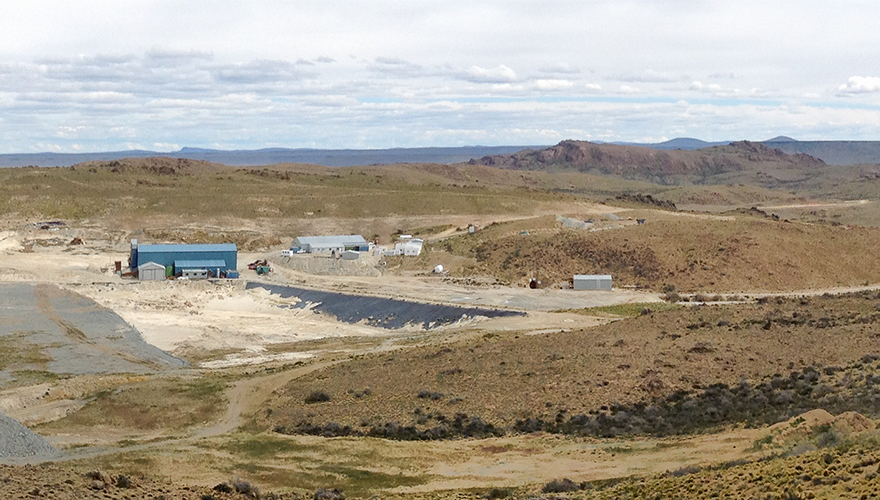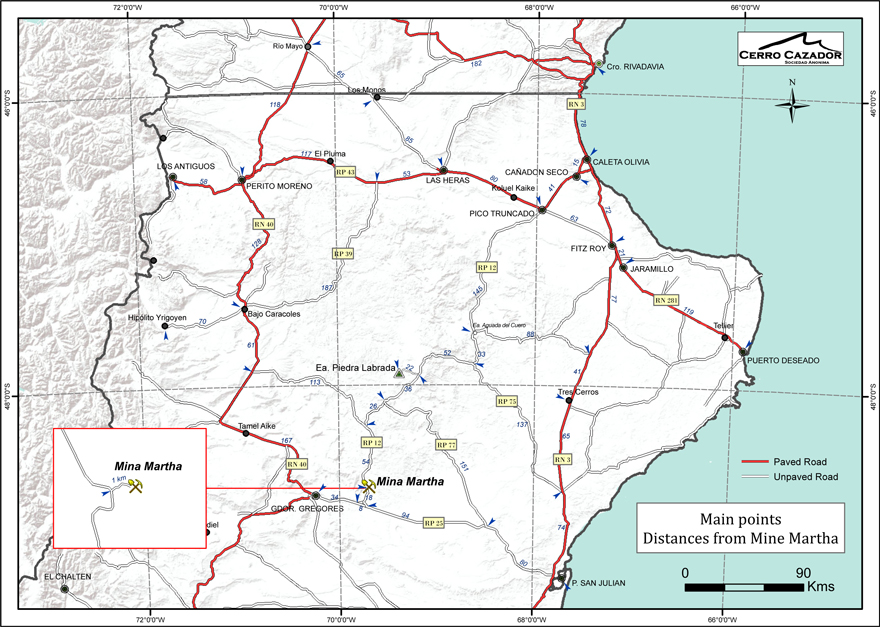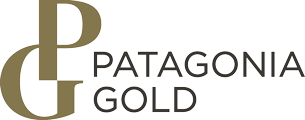The Martha property (“Martha”) is located in the Province of Santa Cruz, Argentina. The closest community is the town of Gobernador Gregores, situated approximately 50 road kilometers (km) to the west-southwest of Martha. The property is the site of past exploration for, and surface and underground mining and recovery of, silver and gold from epithermal veins and vein breccias, previously built and operated by Coeur Mining Inc. (formerly, Coeur d’Alene Mines Corp.) and Yamana Gold Inc.

During its production life Martha produced from very high-grade veins and vein breccias. The high silver grades of the historic Mineral Reserves, ranging from over 2,500 grams/tonne (g/t) in the early years of the project to over 400 g/t in the later production years, and the high silver to gold ratio of the historic Mineral Reserves which averaged over 900:1, set Martha apart from the other producing mines in the province.
Patagonia Gold acquired the Martha property as part of its Reverse Takeover of Hunt Mining Corp. in 2019. The property consists of approximately 7,850 hectares of concessions, various buildings and facilities, surface and underground mining and support equipment, a 480 tonne per day (tpd – maximum) crushing, grinding and flotation plant, tailings facility, various stockpiles and waste dumps, employee living and cafeteria quarters. In addition, Patagonia Gold has access to surface ranch (“estancia”) lands surrounding the mine and mill site that are approximately 35,700 hectares in size.
Royal Gold Inc. holds a 2% Net Smelter Return (NSR) royalty on all production from the Martha property; the obligation for which transferred from Hunt to Patagonia Gold. In addition, the provincial government holds a 3% pit-head royalty from future production.

Geology & MineraliZation
Silver and gold mineralization at Martha is hosted in Jurassic-aged felsic volcanic rocks of the Chon Aike Formation of the Bahia Laura volcanic complex (BLVC). Host rocks are relatively shallowly dipping ignimbrites, locally inter-bedded with thin sections of sedimentary strata.
The oldest geological unit in the Martha area is a crystal rich, dacitic ignimbrite, which is overlain by a thin, tuffaceous unit. Further up in the Chon Aike sequence rocks change to crystal rich, rhyolitic ignimbrite followed again by a thin layer of tuffaceous sediments. The upper part of the sequence at Martha is comprised of lithic rich, rhyodacitic ignimbrite related to a caldera-forming, volcanic event.
Most of the historic mineral deposits were hosted in the crystal rich ignimbrites and tuffaceous units (Paéz et al, 2015) although, locally, upper lithic fragment tuffs and ignimbrites can host high-grades of vein-hosted silver and gold. An example of the latter is the mineralization in the Betty deposit at Martha.
Martha mineralization is epithermal, intermediate sulfidation in style, hosted in quartz veins, veinlets and vein breccias cutting the margins of the Jurassic-aged caldera (Primero de Abril Caldera; Paéz et al, 2015). Vein widths vary significantly on surface from a few centimeters up to several meters. Banded textures are common in the wider veins. Adularia is a common gangue mineral in the quartz veins.
Development and Production
In January 2017, following reconditioning of the mill, the Company restarted production from remnant blocks of silver and gold mineralization in the Martha vein. The mill has a proven capacity of 240 tonnes per day but is currently processing an average of 120 tonnes per day to produce high-grade concentrate. In addition, the Company had been verifying historic mineralization on these and other proximal structures with its own programs of trenching and drilling and identified an extension of the Martha vein (“Martha West”), which was mined by shallow pit methods in 2017.
During its period of ownership, Hunt extracted over 26,000 tonnes of mineralized material from Martha grading 1.01 g/t Au and 771 g/t Ag and processed that material at the Martha mill. Concentrates were sold to a third party concentrate trading company (Ocean Partners USA Inc.). Concentrate assays were produced at the Martha mill and checked by Alex Stewart International (ASI), an independent, certified commercial laboratory with local facilities in Mendoza and Buenos Aires, Argentina.
There are no current mineral resources or mineral reserves on the Martha property and although Hunt conducted mining and processing, there are no assurances that similar activities will be conducted and there may be risks associated with such activities without defined mineral reserves. Hunt Mining filed its most recent NI 43-101 technical report for the Martha project on www.sedar.com in October 2018.
